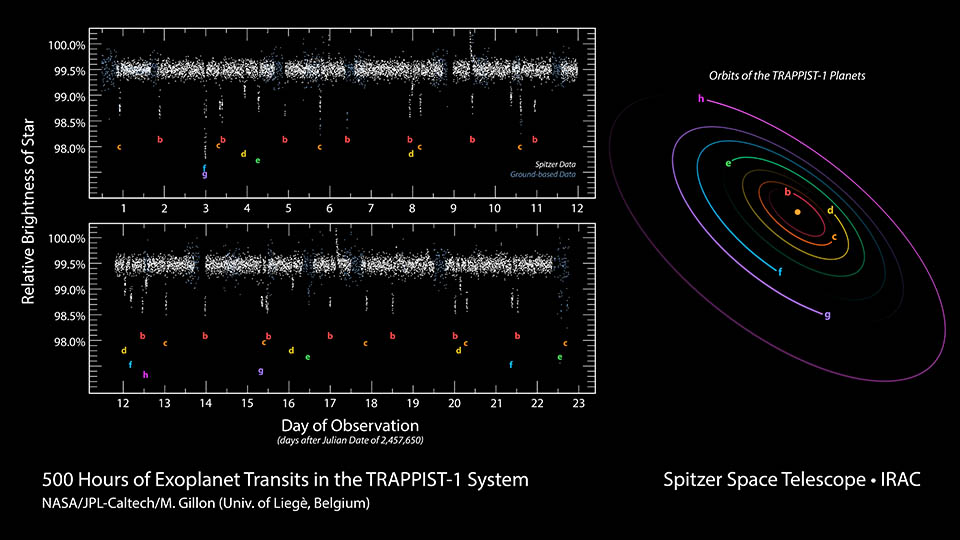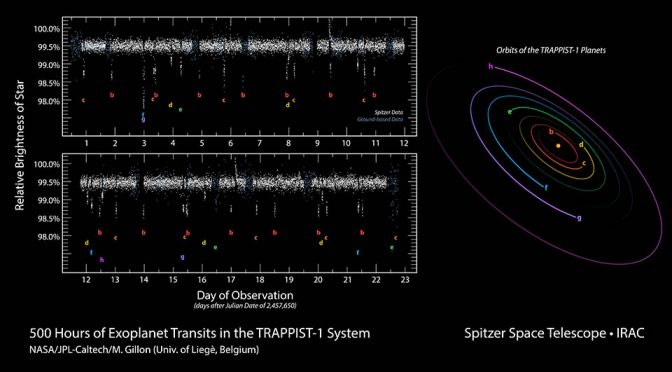On 22 February 2017, astronomers announced that the faint Jupiter-sized ultra-cool red dwarf star TRAPPIST-1, in the constellation of Aquarius, is host to seven Earth-sized planets, all of which are within the stars’ ‘habitable zone’, where it is possible that liquid water could be present.
The exoplanets have not yet been imaged directly but were detectable due to the dimming of the light from TRAPPIST-1, as the planets transited across the face of the star.
Because TRAPPIST-1 lies just 39 light years (12 parsecs) from Earth, astronomers should be able to study the composition of the planets’ atmospheres though spectroscopy, possibly allowing them to determine whether or not any of the planets harbour life.
Only slightly larger than Jupiter, but having 84 times the mass, TRAPPIST-1 was named for the TRAnsiting Planets and PlanetesImals Small Telescope at La Silla Observatory, Chile, which first detected three planets orbiting the star in 2015. However, the recent observations by a collaboration of telescopes, including the Spitzer Space Telescope and the Very Large Telescope on Cerro Paranal mountain in Chilli, resolved one of the three known planets into a group of four, as well as spotting a seventh planet further out from the star.
Since the planets’ orbits are close enough together to influence each other gravitationally, it was possible for astronomers to estimate that their masses range from 0.4 to 1.4 times the mass of the Earth.
The discovery could help scientists to better understand the formation of the planets in our own solar system.
For more information, read the report in the journal Nature from 22 February 2017: www.nature.com/news/these-seven-alien-worlds-could-help-explain-how-planets-form-1.21512
and visit: exoplanets.nasa.gov/trappist1/
For up-to-date news on TRAPPIST-1, visit: www.trappist.one
